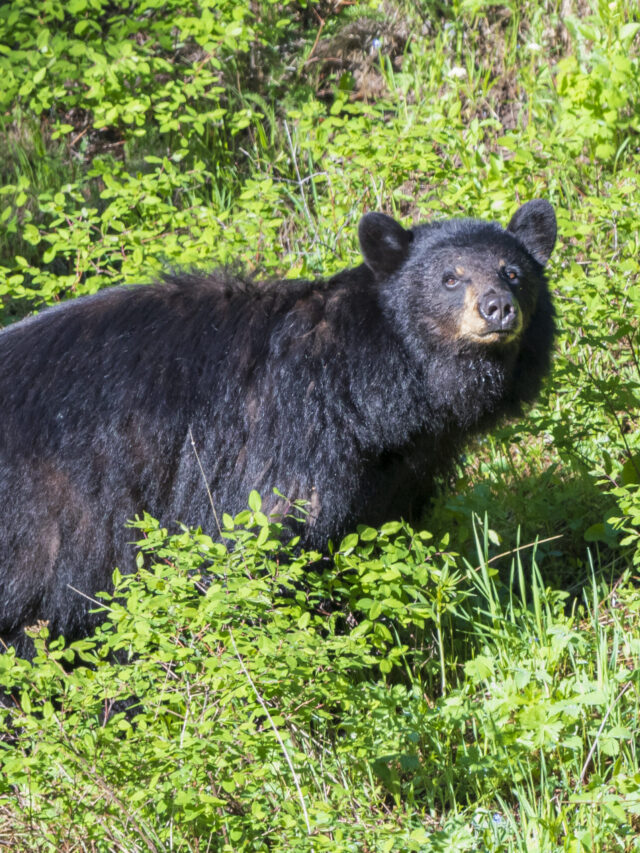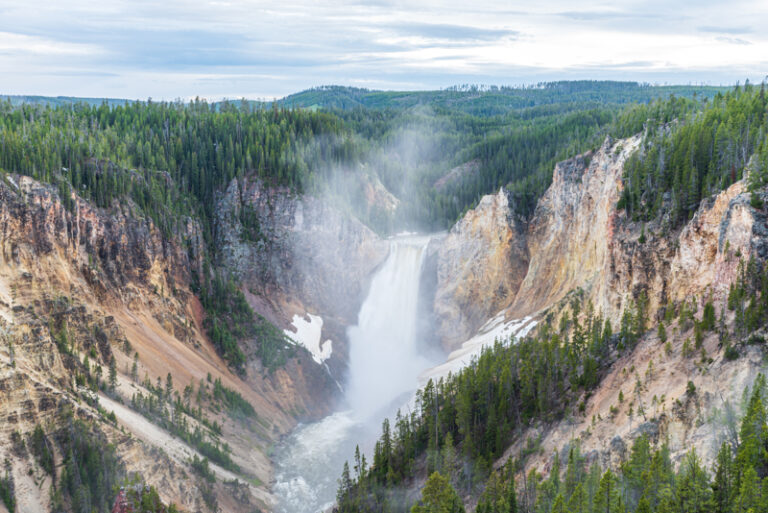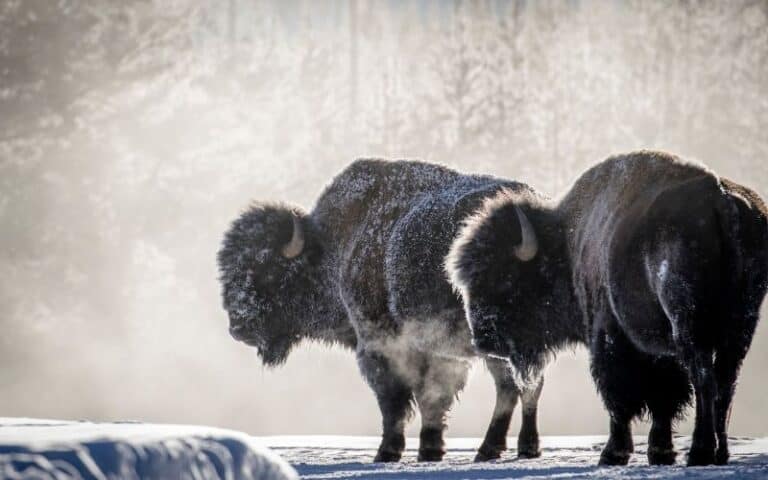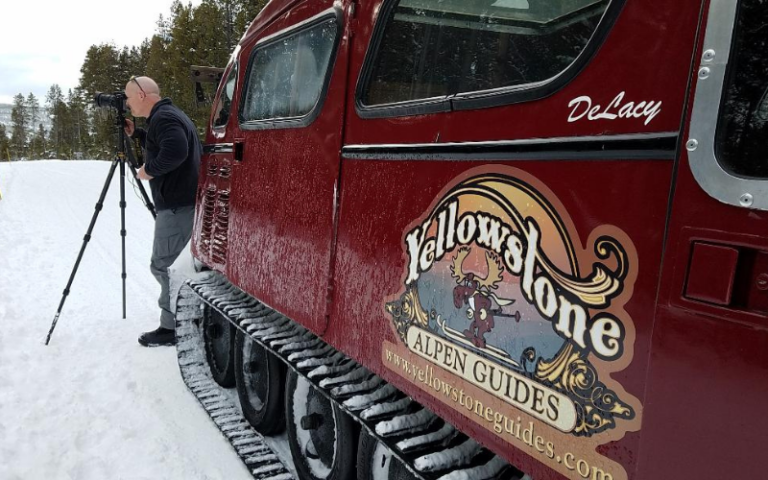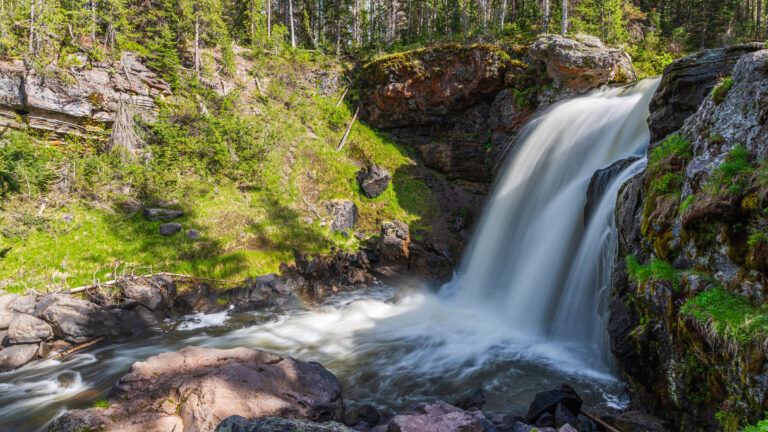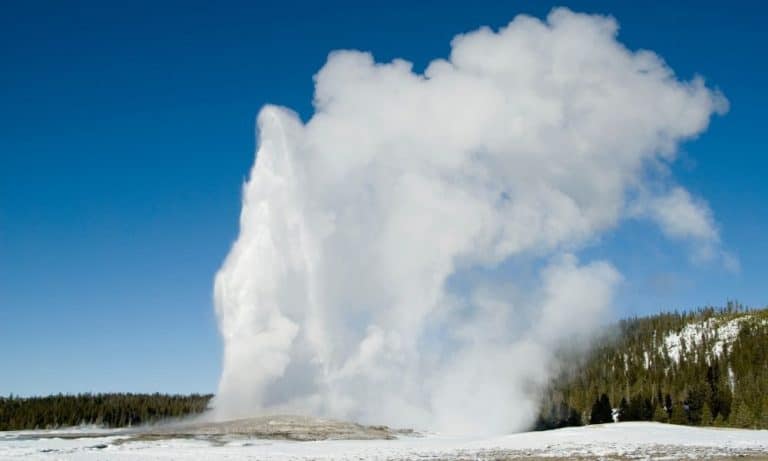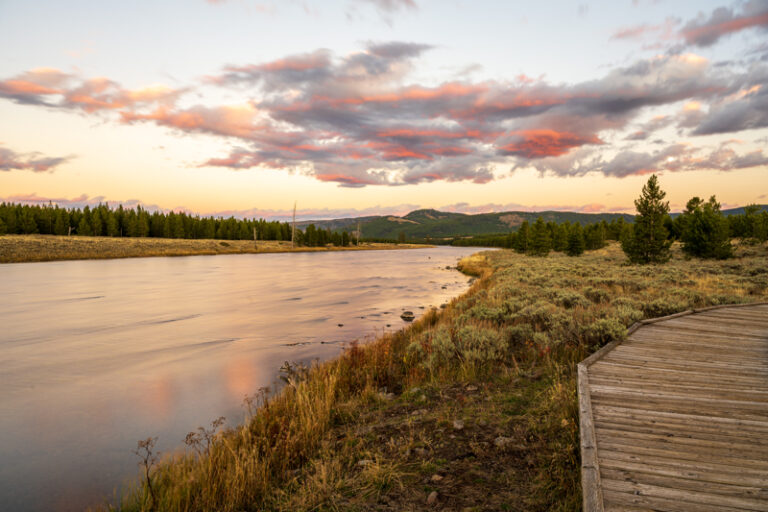Best Time to Visit Yellowstone For Wildlife
Yellowstone National Park is famous for its geysers, hot springs, canyons, waterfalls, and wildlife! If you’re wondering the best time to visit Yellowstone for wildlife, we list the animals you’ll see each month of the year at the park.
Use our Yellowstone National Park travel guide and the information below to determine the best time of year to plan your vacation.
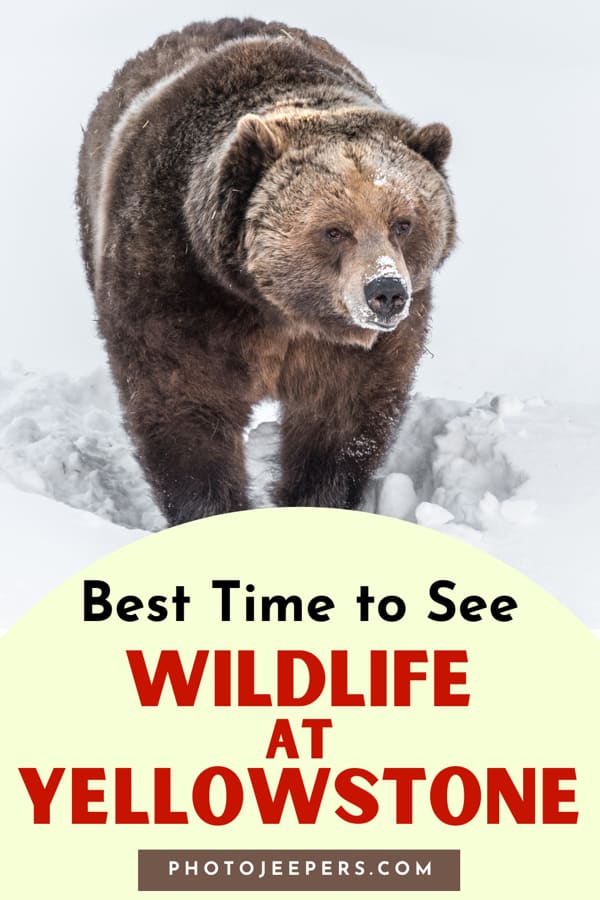
We’ve created a resource detailing everything you need to know for visiting Yellowstone during all months of the year: weather, services available, what to pack, things to do, and more: Best Time to Visit Yellowstone National Park.
Yellowstone National Park Wildlife
Take a visual tour through Yellowstone National Park to see the stunning wildlife you’ll see at the park!
Best Time to Visit Yellowstone For Wildlife
During each season at Yellowstone you’ll see a wide variety of birds and mammals. Here’s our guide to the wildlife you’ll see at Yellowstone each month of the year.
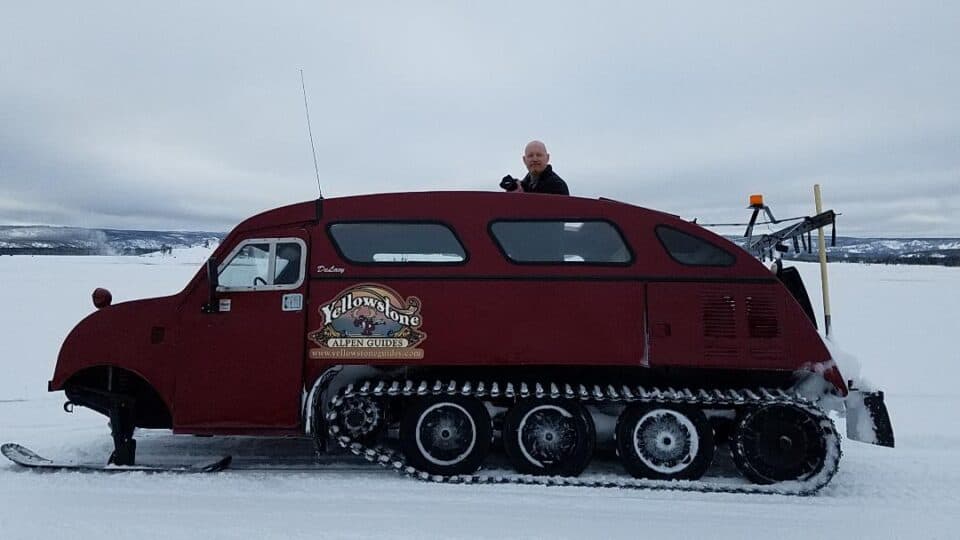
Yellowstone Wildlife in January
Visiting Yellowstone in January you’ll find all roads closed except from the north entrance in Gardiner to the northeast entrance in Cooke City. You can access the park from West Yellowstone and the south entrance near Grand Teton by Yellowstone snow coach tours, snowshoeing, cross country skiing or snowmobile tours.
Since the park is covered with a blanket of white snow, it’s easier to see the bison, elk, foxes, coyotes, and wolves. The birds you’ll see in January are mountain and black-capped chickadee, red-breasted nuthatch, Townsend’s solitaire, gray jay, and Clark’s nutcracker.
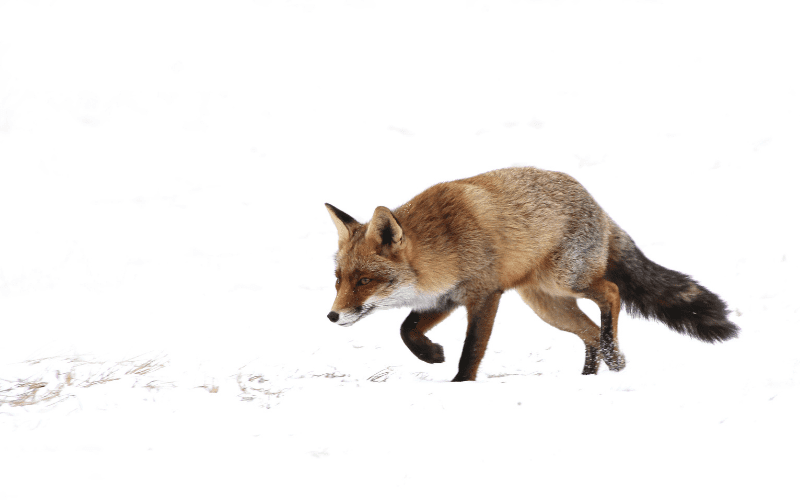
Yellowstone Wildlife in February
Accessing Yellowstone National Park in February is that same as January: snowcoach, snowmobile or snowshoeing.
Mating season begins for wolves and coyotes, as well as nesting season for great horned owls. Keep an eye out for otters diving for fish or skidding along the banks of the rivers.
Due to the harsh winter, elk and bison carcasses provide food for bald eagles, coyotes, foxes, ravens and wolves.
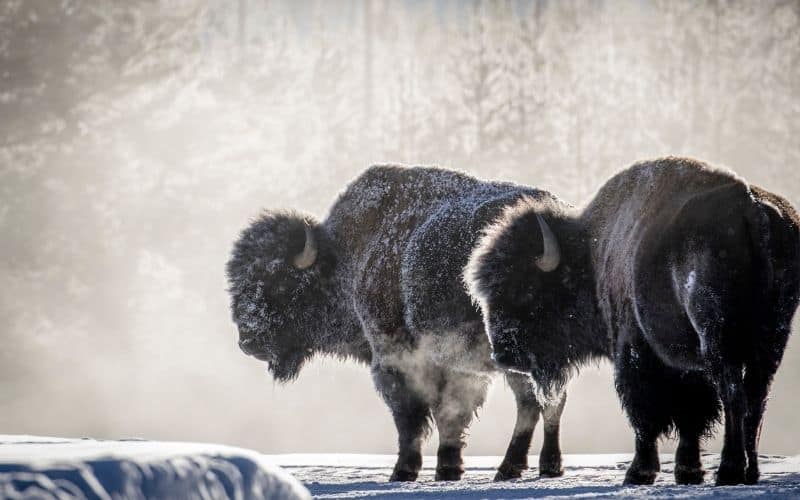
Yellowstone Wildlife in March
There are still limited ways to enter Yellowstone National Park in March. You can see lots of wildlife driving the open road from Gardiner, through Lamar Valley and on to Cooke City.
Male bears begin to emerge from their dens in March searching for carcasses. Bison once again return to the Blacktail Ponds area. Sandhill cranes, ducks, robins, swans, geese, red-tailed hawks, bluebirds, and meadowlarks also begin to return to Yellowstone this time of year.
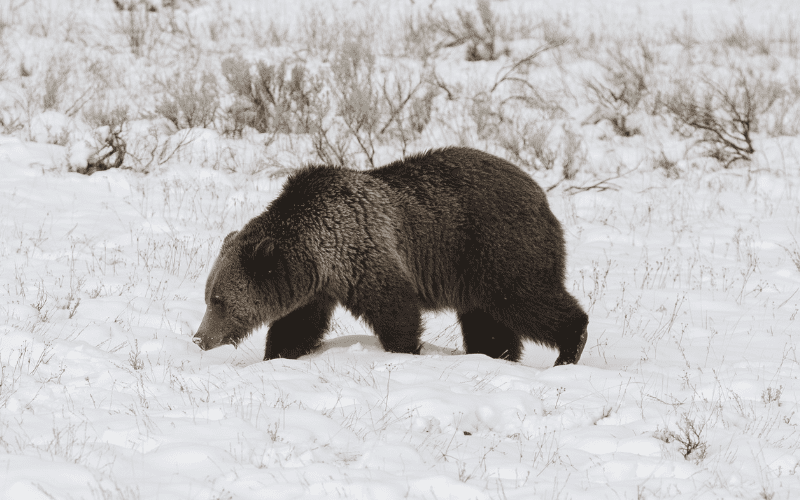
Yellowstone Wildlife in April
When visiting Yellowstone National Park in April you’ll still find winter conditions so be prepared for cold and snowy conditions. Mid-April the West Entrance usually opens to provide access to Madison, Mammoth, Old Faithful and Norris.
In April you’ll begin to see bison calves along the northern end of the park. These calves are also called ‘red dogs’ because of their bright rusty orange coats. Male bears are also out and about. More birds begin to return: warblers, flycatchers, tanagers, swallows, loons, peregrine falcons, and osprey.
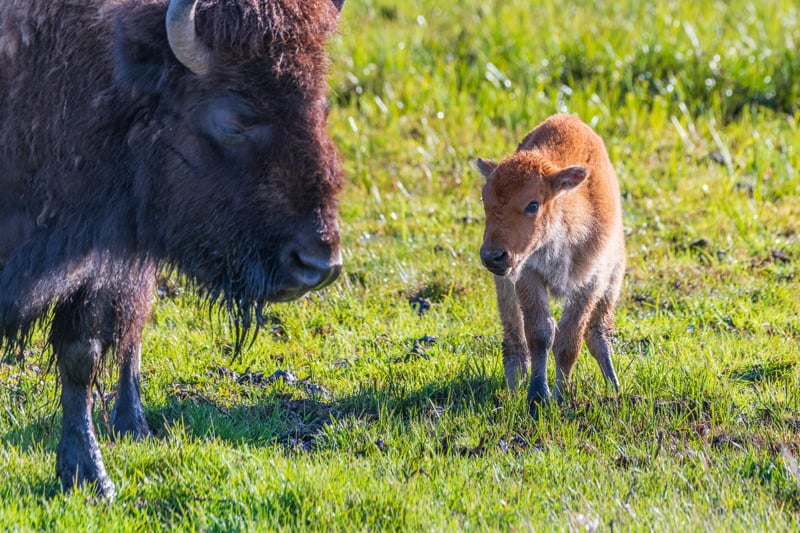
Yellowstone Wildlife in May
You’ll still encounter unpredictable weather at Yellowstone in May. The East Entrance opens in early May; the South Entrance opens in mid May; and Dunraven Pass opens at the end of May.
May is an amazing time for wildlife babies: bear cubs, elk calves, and wolf pups begin to be seen throughout the park in the vibrant green meadows.
Chorus frogs can be heard in marshy areas. The rivers, streams and Yellowstone waterfalls are full and raging from the snowmelt.
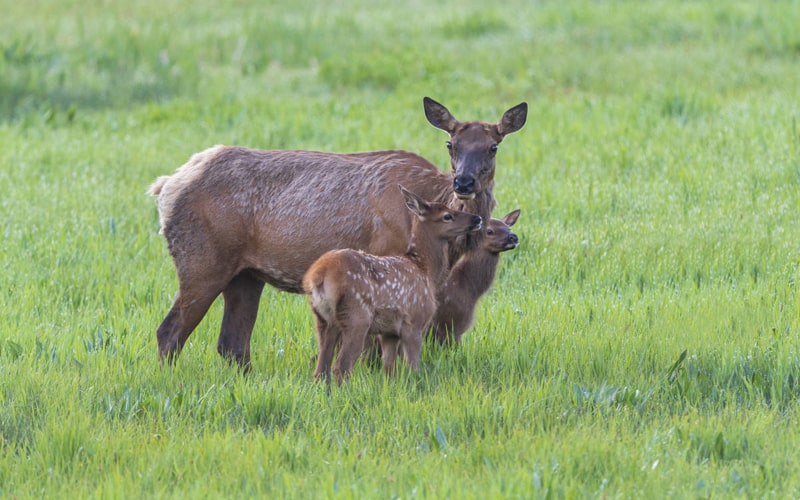
Yellowstone Wildlife in June
The park roads and services are usually fully open at Yellowstone in June!
Bears, elk, wolves, bison, moose, marmots, pronghorn, bighorn sheep and more are raising babies in June. Predators like grizzlies, badgers, and peregrine falcons are hunting these young animals. Spawning trout also provide food to bears and otters. Over 150 species of birds now can be found along cliff ledges, tree limbs, trunk cavities, grasslands, marshes, and treetops.
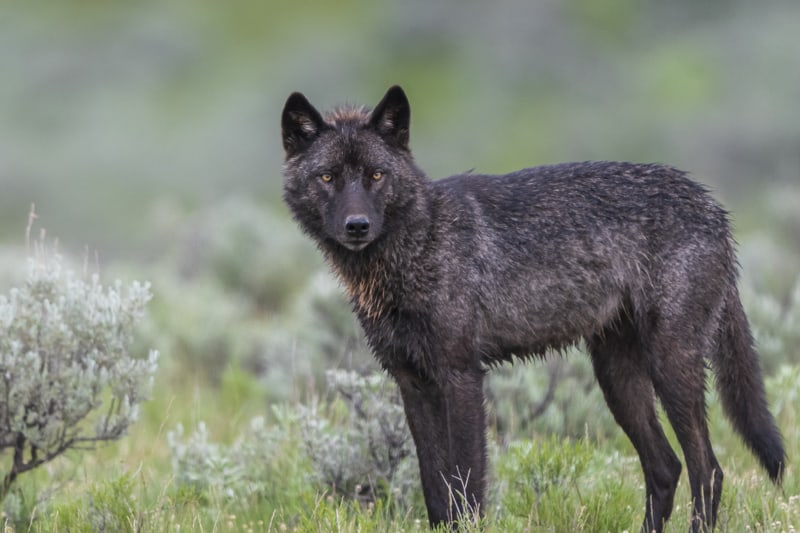
Yellowstone Wildlife in July
It’s the busy season at Yellowstone National Park in July. Most wildlife heads up to high mountain elevations during the summer. You might need to use a spotting scope to see some of the wildlife this time of year.
In the summer months the best places to see wildlife are Hayden and Lamar Valleys. We recommend you continue past Lamar Valley to Cooke City and even drive along Beartooth Highway. Look for bison, elk, bear, moose, bighorn sheep, mountain goats, coyote, fox, and badgers! Fly fishing is a big draw during this time of year.
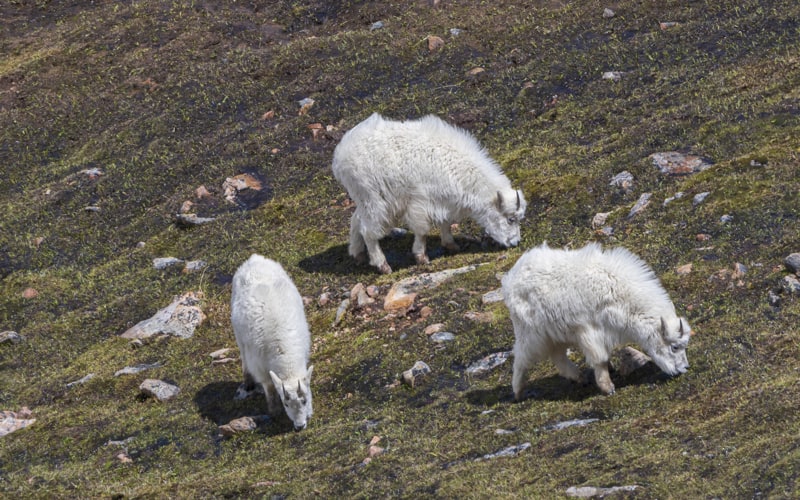
Yellowstone Wildlife in August
When visiting Yellowstone in August, the landscape turns a gold color as grasses cure and the risk of forest fires rises.
The bison rut happens every August, and it’s exciting to watch. You’ll find big herds in Lamar and Hayden Valley. Mid August the pronghorn are mating. Red squirrels are busy stashing pine cones for the winter.
The drive through Lamar Valley to Cooke City and along Beartooth Highway is home to many types of animals: bison, elk, bear, moose, bighorn sheep, mountain goats, coyote, fox, and badgers!
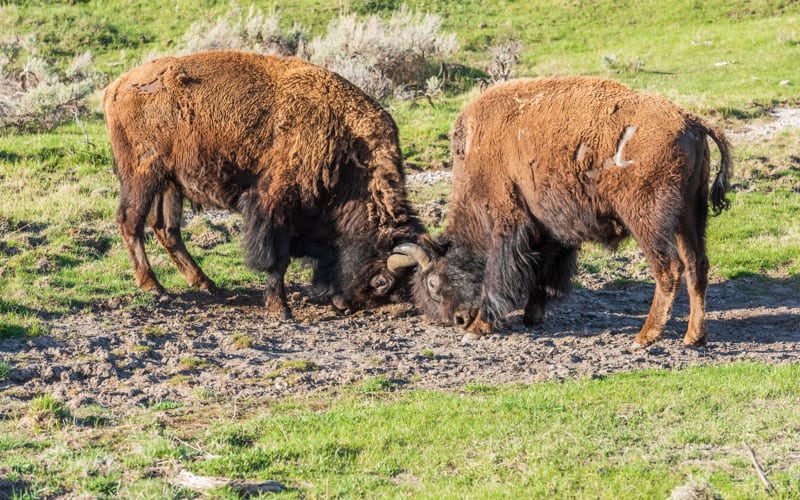
Yellowstone Wildlife in September
Planning a Yellowstone vacation in the fall is one of the best times to visit. The weather is just right for outdoor activities.
Around the second week of September, you’ll begin to hear the high pitched bugle of bull elk signaling the elk rut! The town of Mammoth is a terrific place to watch the male elk exert their dominance.
Bears return to the lower elevations looking for berries and bull bison or elk that perished during the rut. Migratory hawks and eagles begin to travel south and west for the winter.
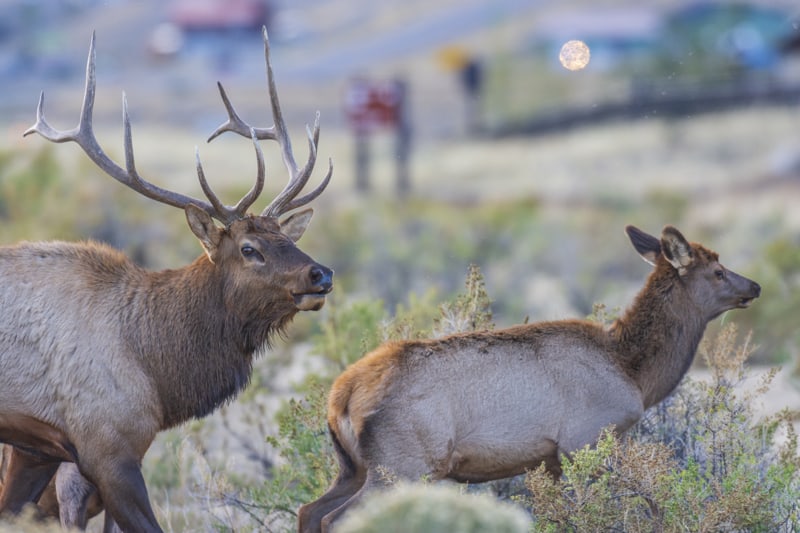
Yellowstone Wildlife in October
When visiting Yellowstone in October the lodges, stores, gas stations and roads begin to close for the season. Do your research in advance so you know what to expect for all park services.
As snow begins to fall, male grizzlies are eating what they can before denning season, and female grizzlies are looking for possible den locations. Bison, elk, deer and other mammals build up coats of fur for the winter. Most of the summer birds have left Yellowstone, and those that remain also build up coats of feathers to withstand the cold.
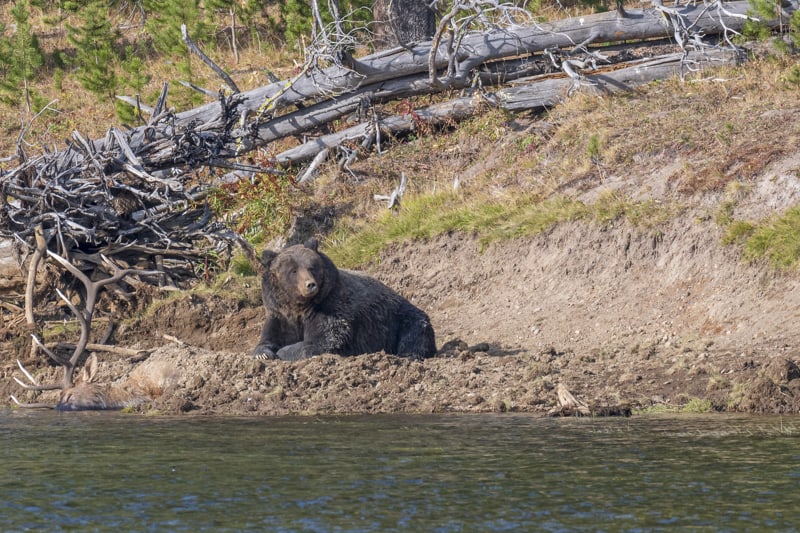
Yellowstone Wildlife in November
Keep in mind that most of the park roads close when visiting Yellowstone in November. For the entire month of November, you are limited to the one single road from the north entrance in Gardiner to the northeast entrance in Cooke City.
Around Thanksgiving the deer and bighorn sheep rut is at its peak. If you’re lucky you’ll hear the smack of bighorn rams butting heads over females. Rabbits and weasels don white fur coats for the winter.
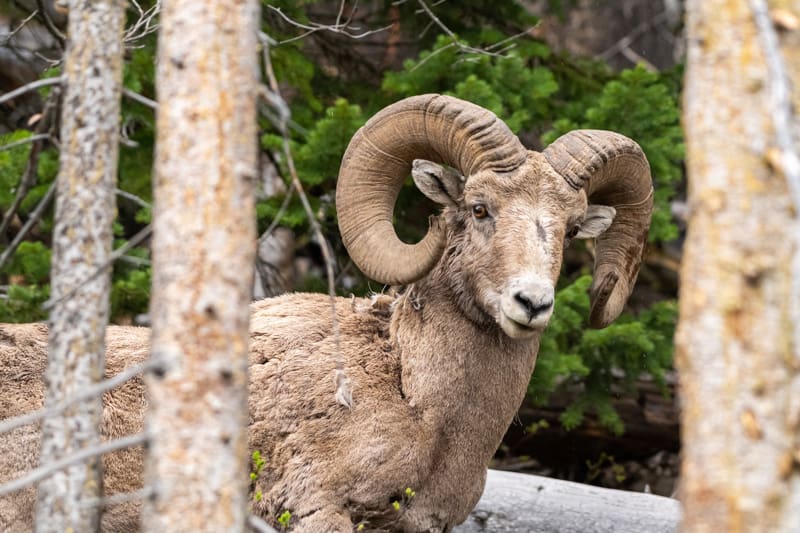
Yellowstone Wildlife in December
If you’re visiting Yellowstone in December the park can once again be accessed via by Yellowstone snow coach tours, snowshoeing, cross country skiing or snowmobile tours.
In December the trumpeter swans return and can be found floating along the Yellowstone and Firehole Rivers. Since the park is again a landscape of white snow, it’s easier to see the bison, elk, foxes, coyotes, and wolves that stay in the park during the winter.
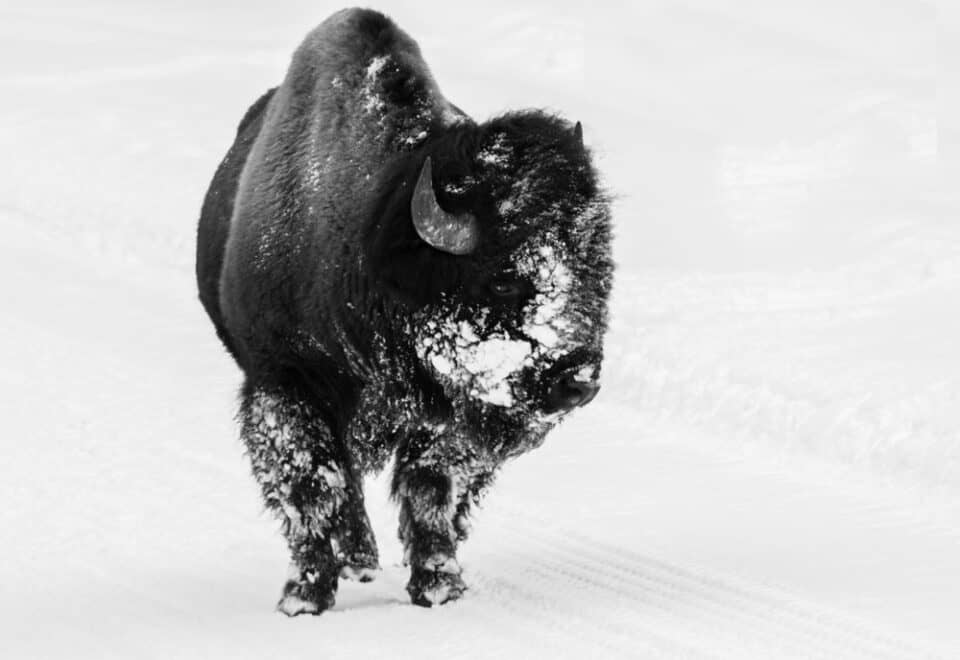
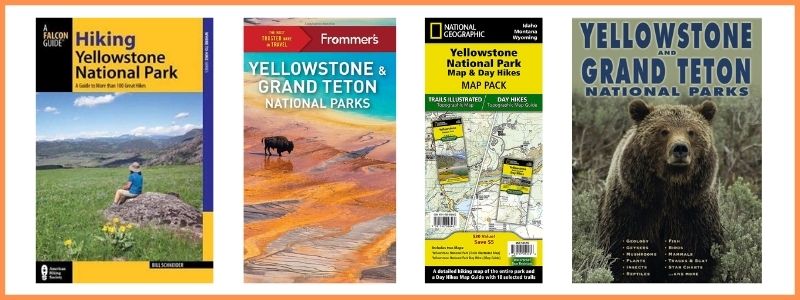
Plan a Yellowstone Vacation
- Yellowstone National Park Travel Guide
- Things to Do at Yellowstone National Park
- Best Time to Visit Yellowstone National Park
- Best Time to Visit Yellowstone for Wildlife
- Yellowstone Tours
Places to stay in West Yellowstone
- Holiday Inn, West Yellowstone
- ClubHouse Inn, West Yellowstone
- Kelly Inn, West Yellowstone
- West Yellowstone hotels!
Places to stay in Gardiner
- Yellowstone Gateway Inn, Gardiner – full kitchen and comfy bed, one of our favorite places to stay!
- Park Hotel Yellowstone, Gardiner – charming place to stay and loved by guests!
- Absaroka Lodge, Gardiner – beautiful location with river views!
- Gardiner hotels!
Places to stay in Cooke City or Silver Gate
- Sunny Log Home on the Creek, Silver Gate (VRBO) – the most AMAZING location with an awesome fireplace and comfy bed!
- High Country Motel and Cabins – local owners who love what they do, and make you feel so welcome!



